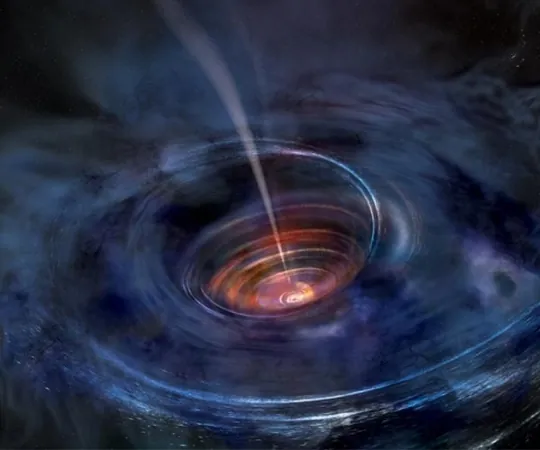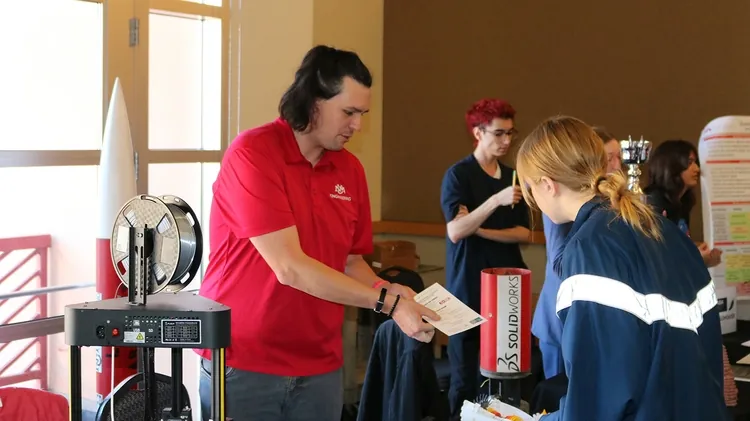
Black Holes Unmasked: The Astonishing Connection Between Their Magnetic Fields and Parent Stars
2024-11-19
Author: Wei
Introduction
In an exciting revelation for astrophysicists, researchers have uncovered the longstanding mystery surrounding the powerful magnetic fields associated with black holes. Known for their insatiable gravitational pull, black holes also unleash extraordinary high-energy jets and gamma-ray bursts—some of the most explosive phenomena in the known universe. In fact, these bursts can emit more energy in just seconds than the Sun produces in its entire lifetime!
Tracing Magnetic Origins to Proto-Neutron Stars
A groundbreaking study conducted by scientists at the Flatiron Institute in collaboration with fellow researchers is shedding light on the origins of black hole magnetism. Published in the November 18 issue of The Astrophysical Journal Letters, this research reveals that the magnetic fields of black holes can be traced back to their progenitor stars. When massive stars reach the end of their lives and explode as supernovae, they leave behind a dense remnant called a proto-neutron star, which eventually can collapse into a black hole.
The Role of Accretion Disks
Ore Gottlieb, the first author of the study and a research fellow at the Flatiron Institute's Center for Computational Astrophysics (CCA), explained, “Proto-neutron stars play a pivotal role as the 'mothers' of black holes. As these black holes form, the surrounding disk of material effectively pins their magnetic lines, preserving this vital property.” This means that the magnetic fields not only play a crucial role in the formation of jets but are also inherited from the proto-neutron stars.
The research team aimed to simulate the lifecycle of massive stars, from birth to collapse, to understand how jets responsible for gamma-ray bursts form. However, they encountered difficulties in accurately modeling magnetic field behavior during the implosion of neutron stars.
The Surprising Discovery: Accretion Disks Can Preserve Magnetism
Gottlieb noted that while previous theories suggested the collapse would amplify magnetism, they overlooked the role of accretion disks. “All previous simulations considered isolated stars. We discovered that neutron stars also have their own accretion disks before collapsing into black holes,” he explained. This led the researchers to conclude that these disks could preserve the magnetic structures of the neutron stars, allowing the black holes to maintain powerful magnetic fields post-formation.
The team's calculations indicate that black holes can indeed retain the magnetic fields of their progenitor stars, as the formation of these accretion disks often occurs rapidly enough to outpace the loss of the neutron star's magnetic properties.
Revolutionizing our Understanding of Jet Formation
Gottlieb emphasized that this discovery fundamentally alters how scientists approach jet formation in black holes. “Previously restricted connections between star populations and jet formation are now poised for reevaluation, considering that the presence of an early accretion disk suggests magnetism,” he stated. This milestone opens up new avenues for understanding how various stellar endpoints contribute to cosmic phenomena.
Beyond the scientific impact, the study highlights the power of collaboration in research, as multifaceted expertise was crucial to addressing complex astrophysical questions. With advanced computational resources from CCA, the researchers conducted simulations that surpassed previous attempts in consistency and accuracy.
The Implications Reach Beyond Black Holes
This groundbreaking work does not only solve the mystery of black hole magnetism; it also sets the stage for future explorations of stellar evolution, gamma-ray bursts, and cosmic jets. As scientists delve deeper into the interactions between stars and their remnants, more revelations may be on the horizon—further unlocking the secrets of our universe. Stay tuned as this story continues to unfold!

 Brasil (PT)
Brasil (PT)
 Canada (EN)
Canada (EN)
 Chile (ES)
Chile (ES)
 España (ES)
España (ES)
 France (FR)
France (FR)
 Hong Kong (EN)
Hong Kong (EN)
 Italia (IT)
Italia (IT)
 日本 (JA)
日本 (JA)
 Magyarország (HU)
Magyarország (HU)
 Norge (NO)
Norge (NO)
 Polska (PL)
Polska (PL)
 Schweiz (DE)
Schweiz (DE)
 Singapore (EN)
Singapore (EN)
 Sverige (SV)
Sverige (SV)
 Suomi (FI)
Suomi (FI)
 Türkiye (TR)
Türkiye (TR)